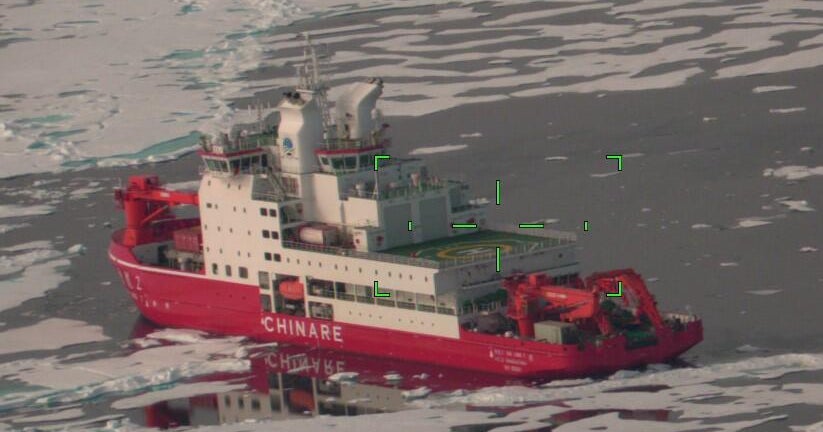Chinese research ship detected off Alaskan coast, Coast Guard says

A China-flagged research vessel was detected Friday off the coast of Alaska, the U.S. Coast Guard said.
The Coast Guard reported Saturday that the Xue Long 2, an icebreaker, was detected about 290 nautical miles north of Utqiagvik, Alaska, in the U.S. Arctic.
The Xue Long 2 is operated by China’s Polar Research Institute.
U.S. Coast Guard photo courtesy of Air Station Kodiak
The ship was in the U.S.’s Extended Continental Shelf, or ECS, which is a portion of the continental shelf that goes beyond 200 miles nautical miles off the coast, according to the State Department. The ship was determined to be 130 nautical miles inside the ECS.
“The U.S. has exclusive rights to conserve and manage the living and non-living resources of its ECS,” the Coast Guard said in its news release.
A Coast Guard C-130J Hercules, a long-range surveillance aircraft, responded to the ship. The Coast Guard also released a photo of the vessel.
“The U.S. Coast Guard, alongside partners and other agencies, vigilantly monitors and responds to foreign government vessel activity in and near U.S. waters to secure territorial integrity and defend sovereign interests against malign state activity,” said Rear Adm. Bob Little, commander of the U.S. Coast Guard Arctic District, in a statement.
CBS News reached out the Coast Guard for clarification on how it was dealing with the vessel.
Earlier this week, Canada’s CBC News reported that the Canadian military was monitoring the movements of the Xue Long 2 in the Arctic.
In a statement provided to the CBC Tuesday, Maj. Alexander Naraine, a spokesperson for the military’s joint operations centre said that the Xue Long 2 was “not currently in Canadian territorial waters.”
Canada was using a Lockheed CP-140 Aurora aircraft based out of Alaska to “actively” monitor the Chinese ship, Naraine said.
This comes after four Russian military planes were spotted and tracked flying near the Alaskan coast Tuesday by North American Aerospace Defense Command.
The aircraft flew through a section of international airspace called the Alaskan Air Defense Identification Zone. While the Alaska ADIZ is considered part of international airspace, it is defined as an area where sovereign U.S. airspace ends but “that requires the ready identification of all aircraft in the interest of national security,” according to NORAD.
In January, American and Canadian fighter jets were scrambled after Russian warplanes were also spotted in the Arctic, NORAD said. The Russian warplanes remained in international airspace.
And in July 2024, the U.S. intercepted several Chinese or Russian bombers near the Alaskan coast. At the time, a U.S. defense officials said it marked the first time ever that Russian and Chinese aircraft have jointly entered the Alaska ADIZ, and the first time Chinese H-6s have encroached off Alaska.
Eleanor Watson,
Emily Mae Czachor and
Stephen Smith
contributed to this report.
[title_words_as_hashtags




